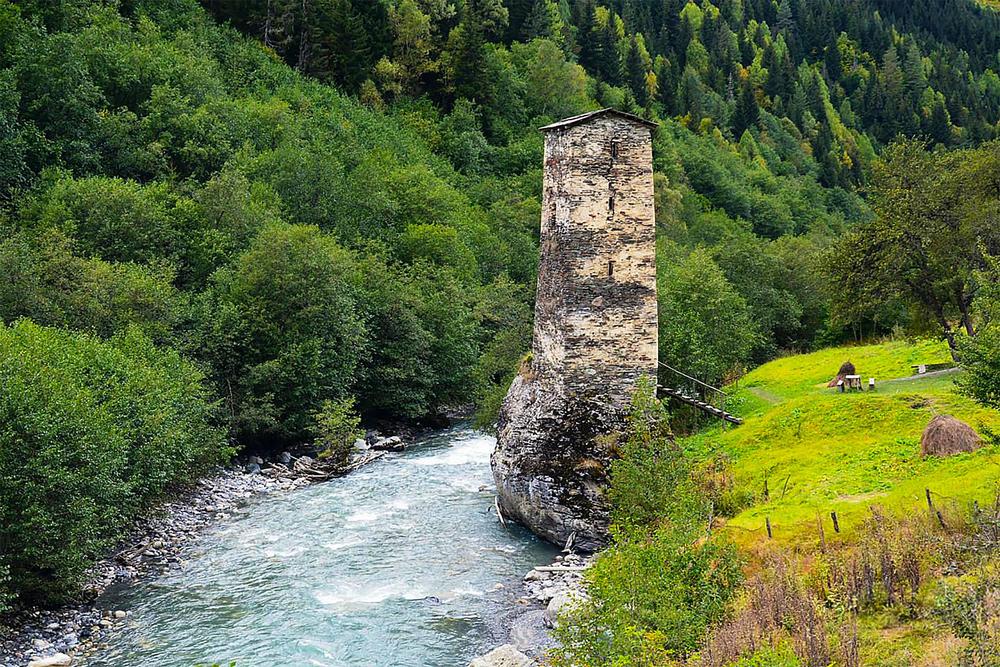The Iprari Church of the Archangels, known locally as Tarngzel, is an architectural and cultural gem nestled within the village of Iprari in the Mestia Municipality of the Samegrelo-Zemo Svaneti region in Georgia. This church, dating back to the 11th century, is part of the rich cultural heritage of the highland region of Svaneti.
Despite its seemingly plain exterior, the church is built of exquisitely carved gallstone tiles, featuring a hall layout with dimensions of 4.75 x 2.6 meters (about 15.6 x 8.5 feet). The interior houses two windows, illuminating the space within, and a stone altar separated from the hall by a three-arched iconostasis. In the architectural vocabulary of churches, the term "iconostasis" refers to a wall of icons and religious paintings, separating the nave from the sanctuary in a church.
The exterior and interior walls of the Iprari Church bear fragments of frescoes from the 11th to the 15th century, lending a glimpse into Georgia's medieval monumental art. These murals, including the Deisis composition of seven figures on the southern façade, were masterfully painted by the royal artist Tevdore in 1096. The frescoes follow the architectural contours of the interior and depict various scenes and figures from Christian iconography, arranged in two tiers.
The church, due to its isolated location, has been a secure storehouse for various pieces of Christian art over centuries. Numerous historical items reported by Georgian scholar Ekvtime Taqaishvili during his 1910 tour are noteworthy. Among them was a now-lost 13th-century triptych of the Virgin and Child, indicating King David VII of Georgia as the possible ktitor.
Inscribed on Georgia's list of Immovable Cultural Monuments of National Significance, the Iprari Church of the Archangels stands as a testament to the artistic and religious history of Svaneti. Its unpretentious architectural style belies the richness of the cultural treasures within.












